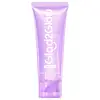What's inside
What's inside
 Key Ingredients
Key Ingredients

 Benefits
Benefits

 Concerns
Concerns

 Ingredients Side-by-side
Ingredients Side-by-side

Water
Skin ConditioningGlycerin
HumectantMyristic Acid
CleansingPotassium Hydroxide
BufferingStearic Acid
CleansingButylene Glycol
HumectantLauric Acid
CleansingGlyceryl Stearate
EmollientPEG-3 Distearate
EmulsifyingDecyl Glucoside
CleansingPhenoxyethanol
PreservativeSaccharide Isomerate
HumectantPotassium Cocoyl Glycinate
Kaolin
AbrasiveNiacinamide
SmoothingParfum
MaskingMenthol
MaskingPotassium Cocoate
EmulsifyingAllantoin
Skin ConditioningDisodium EDTA
Hydroxypropyl Methylcellulose
Emulsion StabilisingEthylhexylglycerin
Skin ConditioningMenthyl Lactate
MaskingPEG-40 Hydrogenated Castor Oil
EmulsifyingPPG-26-Buteth-26
Skin ConditioningPropylene Glycol
HumectantCitric Acid
BufferingMentha Viridis Leaf Extract
MaskingSodium Citrate
BufferingCitrus Grandis Fruit Extract
AstringentWater, Glycerin, Myristic Acid, Potassium Hydroxide, Stearic Acid, Butylene Glycol, Lauric Acid, Glyceryl Stearate, PEG-3 Distearate, Decyl Glucoside, Phenoxyethanol, Saccharide Isomerate, Potassium Cocoyl Glycinate, Kaolin, Niacinamide, Parfum, Menthol, Potassium Cocoate, Allantoin, Disodium EDTA, Hydroxypropyl Methylcellulose, Ethylhexylglycerin, Menthyl Lactate, PEG-40 Hydrogenated Castor Oil, PPG-26-Buteth-26, Propylene Glycol, Citric Acid, Mentha Viridis Leaf Extract, Sodium Citrate, Citrus Grandis Fruit Extract
Water
Skin ConditioningPotassium Cocoyl Glycinate
Acrylates/Steareth-20 Methacrylate Crosspolymer
Sodium Lauroamphoacetate
CleansingVaccinium Angustifolium Fruit Extract
Skin ProtectingPotassium Cocoate
EmulsifyingCeramide EOP
Skin ConditioningCeramide Ng
Skin ConditioningCeramide NP
Skin ConditioningCeramide As
Skin ConditioningCeramide AP
Skin ConditioningSodium Chloride
MaskingGlycosyl Trehalose
Emulsion StabilisingPotassium Hydroxide
BufferingCitric Acid
BufferingHydrogenated Starch Hydrolysate
HumectantLauryl Hydroxysultaine
CleansingCaprylyl Glycol
EmollientDisodium EDTA
Aroma
Phenoxyethanol
PreservativeWater, Potassium Cocoyl Glycinate, Acrylates/Steareth-20 Methacrylate Crosspolymer, Sodium Lauroamphoacetate, Vaccinium Angustifolium Fruit Extract, Potassium Cocoate, Ceramide EOP, Ceramide Ng, Ceramide NP, Ceramide As, Ceramide AP, Sodium Chloride, Glycosyl Trehalose, Potassium Hydroxide, Citric Acid, Hydrogenated Starch Hydrolysate, Lauryl Hydroxysultaine, Caprylyl Glycol, Disodium EDTA, Aroma, Phenoxyethanol
 Reviews
Reviews

Ingredients Explained
These ingredients are found in both products.
Ingredients higher up in an ingredient list are typically present in a larger amount.
Citric Acid is an alpha hydroxy acid (AHA) naturally found in citrus fruits like oranges, lemons, and limes.
Like other AHAs, citric acid can exfoliate skin by breaking down the bonds that hold dead skin cells together. This helps reveal smoother and brighter skin underneath.
However, this exfoliating effect only happens at high concentrations (20%) which can be hard to find in cosmetic products.
Due to this, citric acid is usually included in small amounts as a pH adjuster. This helps keep products slightly more acidic and compatible with skin's natural pH.
In skincare formulas, citric acid can:
While it can provide some skin benefits, research shows lactic acid and glycolic acid are generally more effective and less irritating exfoliants.
Most citric acid used in skincare today is made by fermenting sugars (usually from molasses). This synthetic version is identical to the natural citrus form but easier to stabilize and use in formulations.
Read more about some other popular AHA's here:
Learn more about Citric AcidDisodium EDTA plays a role in making products more stable by aiding other preservatives.
It is a chelating agent, meaning it neutralizes metal ions that may be found in a product.
Disodium EDTA is a salt of edetic acid and is found to be safe in cosmetic ingredients.
Learn more about Disodium EDTAPhenoxyethanol is a preservative that has germicide, antimicrobial, and aromatic properties. Studies show that phenoxyethanol can prevent microbial growth. By itself, it has a scent that is similar to that of a rose.
It's often used in formulations along with Caprylyl Glycol to preserve the shelf life of products.
This ingredient is the potassium salt of coconut acid. Coconut acid is created by mixing fatty acids from coconut oil.
It is an emulsifier, surfactant, and cleanser. According to a manufacturer, it contains glycerin.
Potassium Cocoyl Glycinate is an amino acid-based surfactant and cleaning agent. This ingredient can be derived from animals or plants. It may also be synthetically created from fatty acids of the coconut and glycine.
Potassium Cocoyl Glycinate is a gentle surfactant. Surfactants help gather the dirt, oil, and other pollutants from your skin to be rinsed away. It is a mild cleanser and naturally produces foam.
Potassium hydroxide is commonly known as caustic potash. It is used to fix the pH of a product or as a cleaning agent in soap. In cleansers, it is used for the saponification of oils.
Sapnification is the process of creating fatty acid metal salts from triglycerides and a strong base. During this process, Potassium Hydroxide is used up and is not present in the final product.
Using high concentrations of Potassium Hydroxide have shown to irritate the skin.
Learn more about Potassium HydroxideWater. It's the most common cosmetic ingredient of all. You'll usually see it at the top of ingredient lists, meaning that it makes up the largest part of the product.
So why is it so popular? Water most often acts as a solvent - this means that it helps dissolve other ingredients into the formulation.
You'll also recognize water as that liquid we all need to stay alive. If you see this, drink a glass of water. Stay hydrated!
Learn more about Water